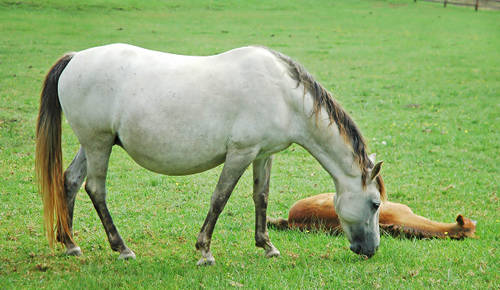Type the name of the breed you're looking for below
[wpdreams_ajaxsearchlite] Don't see the breed your're looking for? Click here and let us know!
Nooitgedacht pony
| Country Of Origin | South Africa |
| History and Background | One of the few indigenous breeds in South Africa, the Nooitgedacht pony is the only true descendant of the better-known Basuto pony. The Nooigedacht is a rare horse breed, with only about 400 purebreds in existence. Development of this breed began in 1951 when the South African Department of Agriculture brought a nucleus group of Basuto-type ponies. In 1952 a breeding project began on the Nooitgedacht Research Station. This was done primarily to save the famous Basuto from extinction but also because South Africa needed an indigenous farm and riding horse adapted to conditions of the region. Due to large-scale inbreeding in the past, the breeders at Nooitgedacht had to use extreme care. For this reason, a Boer stallion and a partbred Arab were used to a limited extent in addition to Vonk, a stallion selected from a departmental committee to be the founder of the breed. The progeny of Vonk dominated the breeding project to such an extent that nearly every member of the Nooitgedacht breed today is a descendant of Vonk through the sire, dam, or both. The foaling percentage was very high, ranging at 90 percent. So strict was the selection that only one in four ponies were kept. Systematic breeding resulted in the gradual crystallization of a recognisable and uniform type, and breeders were able to start talking about a "breed". In 1967, breeding stock of these horses were supplied to eight studs, and they were established as part of the project. In 1968, the Nooitgedacht Breeders' Association was formed by participants in the project. Breeding standards were established as guidelines for breeders and judges at shows. Satisfied that the development task had been completed, the Department of Agriculture Technical Services sold all of its horses by public auction in March 1977. The breeding project was then in the hands of the breeders' association, which had some sixty members in 1979. In 1976, the Nooitgedacht pony was affiliated with the South African Stud Book Association as South Africa's first indigenous pony breed. |
| Use Today | Riding pony |
| Height | 13 to 15 hands (52 to 60 inches, 132 to 15 cm) |
| Colour | Bay, Brown. Chestnut |
| Characteristics | According to the standards set by the Nooitgedacht Breeders' Association, the Nooitgedacht pony should ideally be a good riding horse with outstanding stamina. It should be of a compact build, with a short back, and a well-sloping shoulder. It extremely hardy with good bone structure, good joints, and excellent hooves which seldom require shoeing. Bay, brown (a variant of bay) and chestnut roans are the most common colours. Spotted, skewbald and piebald coats are not permitted. |
| Personality and Temperament | The animal should be good natured and intelligent. |
| Other Considerations | The Nooitgedacht pony is tall enough to be used by both children and adults. It is a good jumper, and it is becoming more popular as a show horse. It excels in gymkhana, polo, endurance riding and hacking. |



